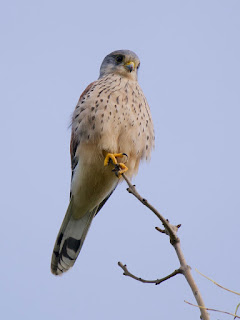Saturday 22nd October 2022
Beachy Head, Sussex
Martin and I spent a profitable couple of hours twitching the Radde's warbler on the south coast between Beachy Head and Eastbourne.
As we arrived there were several birders already in attendance This is he habitat we found, with no bird showing.
- It only showed for a couple of seconds, but it was enough for us to get a good look through the binoculars.
- That was the pattern for the next 2 hours - occasional sightings but always very brief.
Year total = 212 UK Life list total = 365
All pictures courtesy of Martin Jeffree
Radde's Warbler
- This species breeds across southern Siberia and the Russian Far East and winters in South-East Asia.
- Though first recorded in Britain at North Cotes, Lincs, in 1898, there were no further records until the 1960s. Since then it has become an expected autumn visitor and today is recognised as a regular rarity, occurring in some numbers in some years; it was dropped from the British Birds Rarities Committee's list in 2005.
- Radde's occurs exclusively in late September, October and early November and is unknown outside this period. Records come largely from the east and south coasts although, unlike many Siberian species, there is no Northern Isles bias, with most occurring further south.
- This is a highly skulking species, extremely adept at hiding in thick cover. When seen, it is a sturdy, thickset Phylloscopus with a somewhat atypical structure which comprises a rather large head, a shortish rather tit-like bill, a large eye and a solid, broad, deep-bellied body. It has a short primary projection, a longish, slightly round-tipped tail and long, stout legs with large feet.
- Its plumage is a muted olive above, with a warm yellow-buff suffusion below, richest on the vent and undertail coverts. The face pattern comprises a long, strong supercilium, broad and buff in front of the eye – over rather weakly marked lores – and narrower and whiter behind. The legs are a strikingly bright pink.
- It is often silent, but a characteristic chet chet or wit wit may draw attention to its presence.
courtesy of bird guides










